The combination of high-date-rate WiFi with low-data-rate, transmit-once-in-a-while LoRaWAN can make numerous IoT applications practical.
Rémi Lorrain • Semtech • LoRa Alliance • Wael Guibene • Charter Communications • LoRa Alliance • WBA IoT Work Group
An intelligent multiple radio access network (multi-RAN) strategy for IoT is becoming increasingly important. A well-executed multi-RAN strategy can position applications to be more efficient, economical and secure. Such is the case with Wi-Fi and LoRaWAN. The two technologies have rather different backgrounds and features that have proven to be complementary when correctly combined.
Wi-Fi has been a communications standard since the late 1990s. The Wireless Broadband Alliance (WBA), founded in 2003, has helped drive seamless, interoperable service experiences via Wi-Fi within the global wireless ecosystem.
LoRaWAN is a more recent technology (launched in 2015) to provide low-power wide-area (LPWA) wireless networks for massive IoT and industrial IoT deployments. The LoRa Alliance, founded in 2015, is a technology alliance that aims to enable large-scale deployments of LPWA IoT networks through the development and promotion of the LoRaWAN open standard.
To make a simplified comparison between these technologies: Wi-Fi sends large amounts of data at a high speed over a short range, whereas LoRaWAN transfers small bits of data a few times hourly or daily, over multiple kilometers.
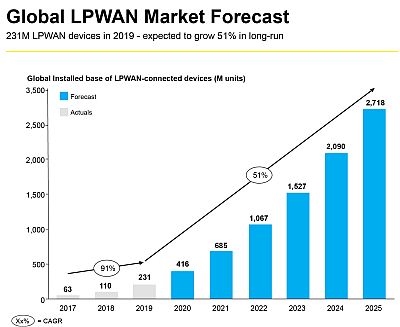
Wi-Fi and LoRaWAN are two of the most widely adopted license-exempt technologies. Together they address a large portion of current IoT use cases. Both technologies are disrupting private/public business models, and they both enable participation in the 5G ecosystem.
Earlier collaborations between 25 member companies of both the WBA and the LoRa Alliance resulted in a paper published in Sept. 2019: Wi-Fi & LoRaWAN Deployment Synergies. This paper intended to demonstrate how these two widely deployed IoT connectivity technologies can support a vast array of use cases. The paper shows Wi-Fi network owners and/or network service providers how LoRaWAN can be deployed on top of an existing Wi-Fi network and, as a complement, helps reduces costs. A Nov. 2020 paper: Wi-Fi & LoRaWAN trials: An overview of use cases across regions combining two powerful technologies presents nine practical trials and proof-of-concept deployments (POCs) involving 11 companies. It covers a variety of use cases implemented across different geographies and verticals.
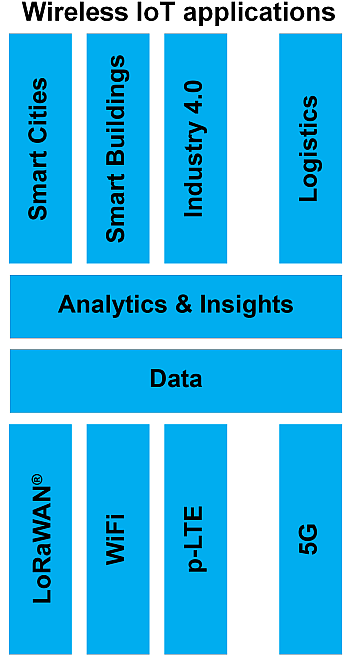 It is useful to examine trials that resulted in interesting key takeaways and promising future developments. While ROI benefits are not always clear, these trials aimed to demonstrate best practices and enable the market to seamlessly develop Wi-Fi and LoRaWAN commercial opportunities.
It is useful to examine trials that resulted in interesting key takeaways and promising future developments. While ROI benefits are not always clear, these trials aimed to demonstrate best practices and enable the market to seamlessly develop Wi-Fi and LoRaWAN commercial opportunities.
As part of its Smart Building strategy, Wi-Fi and cellular network provider Boingo is exploring a service beyond Wi-Fi for multifamily projects that includes LoRaWAN IoT devices such as thermostats, door locks, lighting, hubs and sensors. Potential use cases for the integrated Wi-Fi/LoRaWAN technologies include leak detection as well as temperature, humidity and carbon-monoxide monitoring. As part of this project, multifamily properties were equipped with both a Wi-Fi and a LoRaWAN subsystem and a common network infrastructure. This installation reduced damage costs, improved battery life and reduced interventions for remote-controlled use cases.
“Connectivity is no longer limited to only cellular, Wi-Fi or ethernet,” said Boingo Wireless CTO Dr. Derek Peterson. “Protocols like LoRaWAN help move the infrastructure toward a property-wide, technology-agnostic, converged managed network. This is a win for the resident, the property owner and the IoT community.”
In another development, Charter Communications is offering multi-RAN technologies to cities and businesses as part of its Smart City strategy which is meant to drive economic development and qualify-of-life-improvements. Two of the key technologies are Wi-Fi and LoRaWAN. One facet of the project is the Smart Light Pole: Besides providing illumination, it hosts sensors and devices to help cities understand their noise and pollution levels. Also installed are motion sensors, to optimize lighting brightness, and panic buttons for citizen engagement and alerts.
The pole will help deliver connectivity for applications such as video/road monitoring services and smart intersections (to reduce and prevent accidents). It will also help bring high-speed connectivity to consumers. The Smart Light Pole has two components: a LoRaWAN subsystem for the battery-powered sensors and a Wi-Fi subsystem to serve the higher throughputs for demanding city applications.
“Spectrum has evaluated a range of IoT technologies and associated applications as part of our Enterprise and Smart Cities initiatives,” said Charter Communications Enterprise Services Innovation VP Gunnar Peters. “We have found that a combination of LoRaWAN and Wi-Fi can offer tremendous value, flexibility and coverage for numerous wireless IoT applications. IoT devices using LoRaWAN can operate from batteries for long periods and cover a large geographic area, for applications like infrastructure or environmental monitoring that regularly collect small amounts of data. Wi-Fi, on the other hand, can serve data-intensive applications like traffic management and video monitoring in a smaller geographic area. As IoT infrastructure deployments are planned, use of multiple network connectivity options can enable multiple applications to operate on this infrastructure.”
Another application comes from Smart Parks, an organization which promotes conservation and anti-poaching via modern technology. Since 2018, Smart Parks has been working with IRNAS to develop the OpenCollar tracker. OpenCollar involves open-source tracking collar hardware and software for environmental and wildlife monitoring. This device also uses Lacuna Space LoRaWAN satellite connectivity when it falls outside network coverage.
For this deployment, the tracker was upgraded with the LoRa Edge geolocation platform and the LR1110 chip, also featuring GNSS and Wi-Fi scanning. The upgrade lets the device acquire position coordinates of animals through GNSS scanning or Wi-Fi signals from beacons or inhabited areas, when close by. Data passes over either terrestrial or Lacuna Space LoRaWAN networks. For four-hour position fixes, this trial has proven to be 13 times more power efficient than the base system. Moreover, the battery life has risen from one year to more than eight years without degrading geolocation performance.
“This was a really interesting project that demonstrates the power of combining different radio technologies with advanced satellite technology to create solutions for long-standing challenges,” said, Lacuna CEO and co-founder Space Rob Spurrett. “Every day, we are finding new creative solutions to old problems.”
These trials demonstrated that LoRaWAN and Wi-Fi collaboration can address a large and diverse set of use cases based on the above types of architectural choices. One particular use case addressed the expansion of Wi-Fi OpenRoaming to LoRaWAN. This topic warrants further investigation to see how it will support LoRaWAN ecosystem interconnections.
As broadband technologies continue to evolve, more opportunities for collaboration are opening up for the LoRa Alliance ecosystem. LoRaWAN, being the industry de facto global LPWAN standard, can fit with many other access technologies to continue bringing value to the industry worldwide.
For example, as CBRS and private-LTE gain momentum in the U.S., one can imagine how LoRaWAN, private-LTE and Wi-Fi6/6E can open new opportunities for enterprise as well as industrial IoT applications. On a more global scale, as 5G deployments accelerate, operators and ISPs are combining 5G broadband capabilities with LoRaWAN’s massive IoT strengths to enable applications like smart cities, and accelerate the digital transformation of governments, enterprises and industries alike.

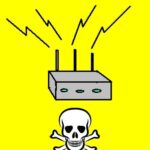
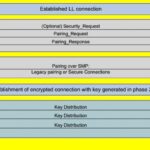

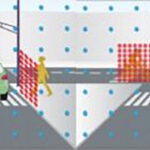

Leave a Reply